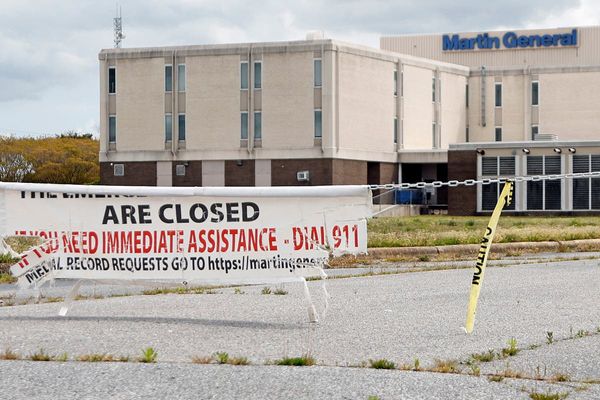
When David Lammy stood up in parliament in April 2018 and criticised Amber Rudd’s “hostile environment” that had seen many of the Windrush generation deported, detained and denied healthcare, he bellowed that this was “a day of national shame”. The approach that began under Theresa May in 2012 became a scandal and led to the resignation of Rudd as home secretary and a pledge from the government to reform the Home Office to ensure it could never happen again. But the past six months have seen Suella Braverman dropping key commitments, and the Home Office unit responsible for reforms has been quietly disbanded, just in time for the 75th anniversary of Empire Windrush’s arrival in Tilbury.
There is plenty to admire in Windrush: Portraits of a Generation, which follows 10 fascinating and inspiring members of the Windrush generation having their portraits commissioned by Buckingham Palace – and created by 10 different artists. Those portraits are now part of the royal collection, which is immensely significant for both the artists and their subjects. But the programme is out of step with the news, and seems to want to take a broader national shame and wrap it up in a neat bow.
King Charles speaks warmly to the camera about his project. He frames this programme and exhibition as feelgood fare that will “recognise and celebrate the immeasurable difference that they, their children and their grandchildren made to this country.” But there’s a jarring disconnect between his positive messaging, delivered while sitting on a golden throne, and the harrowing tales of systemic racism. Sir Godfrey “Geoff” Palmer, scientist, human rights activist and the first black professor in Scotland, talks about how “you would walk into a pub, and if the landlord was putting bottles on the table for white guys to throw at you, you had to run.” It’s hard to shake off that cruelty and allow the hideous hostility they faced to be contorted into a flag-waving tale about the strength of the Commonwealth.
The programme gives some space for each of the subjects and artists to tell their stories, and the cross-generational interactions prove its greatest strength. There’s such warmth in former RAF engineer Alford Gardner’s roaring laugh that it inspires young photo-realist artist Chloe Cox to exclaim, “You’ve got such a great laugh I feel like I want to capture some of the candid nature of your personality.” Linda Haye, the first black woman to be appointed full-time to the Police Complaints Authority, is always referred to as “Miss Linda” by artist Shannon Bono. She is treated with so much respect and formality that it’s deeply sweet to watch.
The Ghanaian artist Serge Attukwei Clottey does his initial sketches of 92-year-old Laceta Reid on his own UK visa documents as “it’s very symbolic for us”. But the most striking interaction is between Palmer and interdisciplinary African American artist Derek Fordjour, who wants to create a multifaceted image of the man, explaining, “With figures like him, we see the accomplishments, and they hide a lot of the scars. I’m interested in where the discomfort lies, what he might be keeping beneath the surface, and how we can bring that into a richer understanding of who he is.”

The bonds quickly formed between artists and subjects are raw and authentic even when their lives and worldviews differ. Gardner is the more anti-establishment of his pairing, and when he speaks about his education in Jamaica, he says, “It was a big taboo to me, English history – I would not learn it.” Which is a surprisingly spicy take to hear in a programme with the royal seal of approval. But Cox, somewhat disappointingly, tows the party line and says, “The Windrush scandal has upset a lot of people, and I know a lot is being done to apologise for that.” That is a jarring statement to see broadcast when it has been recently uncovered that of the 30 intended post-Windrush scandal reforms, Braverman’s Home Office has instituted just eight. Another 13 have been only partially met, and nine have not been met – or been dropped.
That is not to say this programme should dial up the misery. As Gardner beams, “I’ve had a beautiful life.” Seeing their portraits unveiled in the palace, it’s hard not to shed a tear and immediately book a ticket to see the exhibition in person. As Palmer articulates, “The very fact that our portraits are being put up in Buckingham Palace in the royal collection to me reflects an understanding that we’re one humanity, nothing less, and we’ve always been that.”
But while the unveiling of the portraits is a moment of sincere triumph and beauty in a handsomely made programme, it should not alleviate the national shame over their treatment nor be allowed to suggest that the “hostile environment” can be relegated to the annals of history. The power of art can transform hearts and minds. Still, if the Home Office refuses to learn from the scandal and implement reforms, then all the exhibitions, television documentaries and commemorative coins feel like hollow gestures. The best way for the country to honour this generation would be to stop breaking its promises to them.
Windrush: Portraits of a Generation aired on BBC Two and is available on BBC iPlayer.






